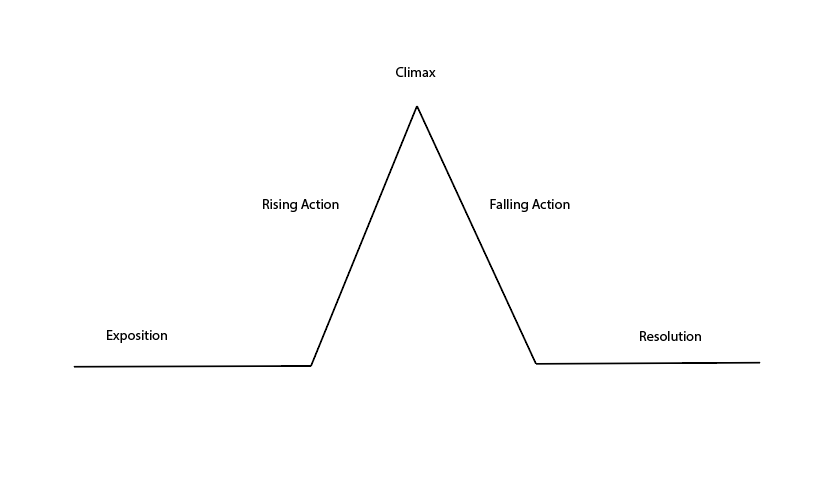
How Marketers Master Storytelling
Whether you’re a toddler who’s just learning how to speak or an elderly soul who’s waiting around in their rocking chair, there’s a command you probably have no shame in asking.
No, it’s not “Take me to the bathroom” (though that may be a commonality between someone who’s two and someone who’s 92). The command I’m thinking of is “Tell me a story.”
The Importance of Storytelling
People love stories. I take that back. People adore stories.
But how could we not? Stories are by far one of the most essential components of existing (even if they don’t fall at the base of Maslow’s hierarchy of needs).
Think about it. Stories are such a vital component of our communities that we feel the need to experience them on a daily basis — even if you aren’t reading a book, scanning a news article, or watching your favorite TV show.
Image credit: The Marmot
Have you ever felt the need to vent to a coworker about the hour-and-a-half client call you just went through? There’s a story there.
Have you ever gotten caught up in a grocery store line and wondered what the lethargic-looking checkout clerk’s life would be like when they got off their shift? There’s a story there too.
If you’ve ever gotten bored in a meeting or seminar and let your mind wander into a daydream, you’re literally telling yourself a story just to stay entertained.
Religion, ancestry, historical legends — all are replete with stories, and that’s never going to change.
As storytelling marketers, we have a duty to the quality of the content we create. So how do you begin to use storytelling in your marketing?
The best first step is to establish the structure of your content. There’s no better way to do that than with the Freytag Pyramid.
The Freytag Pyramid
The typical storytelling structure of the Freytag Pyramid centers around setting the stage (exposition), providing details that move the story forward (rising action), reaching the most significant point of the story (climax), explaining the aftermath (falling action), and making sense of it all (resolution).
Ultimately, it looks and operates like the peak of a roller coaster. Since some people are afraid of roller coasters, I’ll explain these steps in detail using something everyone loves (unless you’re an absolute heathen): eating ice cream.

- Exposition: You’re in your kitchen during a hot summer night, and you’ve had a hankering for a tasty, frozen treat.
- Rising action: You open the freezer door and see the pint of cookies-and-cream ice cream sitting on the shelf. You grab it, put it on the counter, bring out a big bowl and spoon, and prepare to open it.
- Climax: A giant owl swoops in from your open window and steals your pint of ice cream.
- Falling action: As the owl flies out of the window with your ice cream, you’re left absolutely shocked. You had no idea that owls were even native to this part of the country.
- Resolution: Depressed about the loss of your ice cream, you decide to never open that window again.
As you can see from this example, the dramatic structure of storytelling is quite a hoot (lame pun intended). If you’re a marketer, however, the stakes are a little higher.
The Marketer’s Challenge
Marketers have the task of coming up with an engaging story that people don’t necessarily look for themselves. Unlike the news or a popular novel, we don’t have the luxury of an audience that is readily searching for what we have to say.
Because of this, excellent copywriters have to be incredibly conscious of who their audience is.
The Freytag Pyramid is important for giving your story structure, but it alone won’t suffice for creating a story your audience needs to hear.
In order to create an attention-grabbing narrative, you have to define your purpose first. Enter Simon Sinek, a naturally gifted orator and famed marketing consultant. Sinek gave one of the most popular TED Talks of all time with his speech “How Great Leaders Inspire Action.”
The title of the TED Talk is a bit misleading, considering the content of his presentation. He doesn’t talk so much about great leaders inspiring action in others, but instead how companies are able to catch on and create a link with those who listen to their story.
The visual model for inspirational storytelling that Sinek uses in his talk is one he dubs the “Golden Circle.”
Image credit: Gavin Llewellyn
This model is particularly useful for content writers because it establishes your purpose — or the “why” — as the most important component of your messaging. From there, the circle flows outward.
The Golden Circle in Action
Your purpose for the content you create as a marketer shouldn’t be to “generate sales,” “get clicks,” or even “get published.” Each of these is a result, not a purpose.
The “why” for your messaging should flow from a place that wants to inspire action.
Since the Golden Circle flows from the inside out, it’s wise to establish your purpose first and foremost. Two examples that demonstrate how to use (and not use) the Golden Circle in your messaging are these two ads: Super 8 Motels vs. Motel 6.
Both are relatively older ads about staying at affordable motels, yet the Motel 6 ad is a shining star in comparison to its bell-hopping counterpart.
In the Super 8 commercial, the content starts from the idea that there are a lot of bad places to stay, and you could be just like the restless woman who “can’t stay in this place another minute.” Seems reasonable enough — but Super 8 then begins to introduce the “what” instead of the “why.”
Super 8 states that you should come stay at its great motels (“what”), which are great because they’re always kept clean (“how”). There’s no purpose to it, and Super 8 as a brand has struggled over the past few years as a result of its ineffective marketing.
Motel 6, on the other hand, takes an entirely different approach. The commercial begins with the iconic voice of Tom Bodett simply asking a man and his son, “When did you see the light?”
Even if you had never seen a Motel 6 commercial before or have no idea what “the light” is referring to, the ad quickly develops its “why” with the father’s response. The father explains that he saw “the light” on his last fishing trip with his son.
Going fishing with your child is not only a memory that many parents can relate to; it’s one filled with moments that many wouldn’t trade for anything in the world. That meaning alone helps solidify the ad’s “why” — giving it purpose.
The “how” is established after he explains that only a fool would pass up an opportunity to save money, be comfortable, and sleep like a baby. The ad ends the same way it always does, by establishing “what” they are: “Call us, and see the light for yourself.”
The effectiveness of the Motel 6 ad vs. the Super 8 ad is notable in the way that the audience can identify with the messages it conveys through the Golden Circle.
Super 8 (traditional marketing): We have comfortable and affordable motels to stay at. We work hard to keep them clean as can be for you to enjoy your stay.
Motel 6 (Golden Circle marketing): If you’re a person who ventures out to create meaningful memories with your loved ones, and you need a clean and affordable place to stay while doing so, we’ll leave the light on for you at Motel 6.
See the difference? The effectiveness of storytelling comes from creating the narrative around your purpose, not your product.
More on Creating Quality Content
We know that creating quality content is vital for all digital marketers.
If you’re interested in learning more about expanding your content quality from the storytellers at 9 Clouds, subscribe to our blog! Together, we can take on all that digital marketing has to offer.





![Human vs AI A/B Test [Spoiler Alert: Humans Win!]](https://9clouds.com/wp-content/uploads/2024/02/Volvo-dealership-1-600x388.png)


